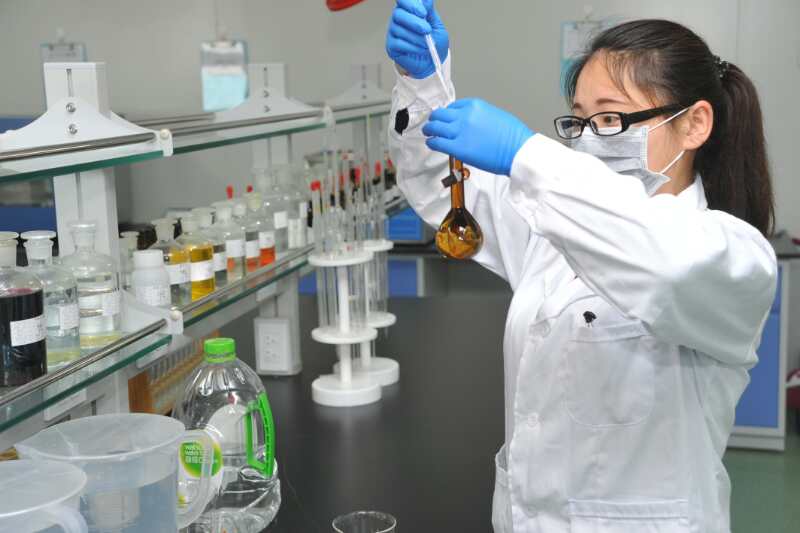Policy innovation facilitates pharmaceuticals' Beijing-to-Cangzhou relocation
- By Yuan Fang
 0 Comment(s)
0 Comment(s) Print
Print E-mail China.org.cn, August 2, 2018
E-mail China.org.cn, August 2, 2018
Beijing's pharmaceutical industry seemed to have reached a crossroad four years ago, when the capital began to move non-essential functions out of the city under a central government plan to coordinate its development with that of neighboring Tianjin and Hebei.
According to the plan, all producers of chemically-active pharmaceutical ingredients (APIs) were required to leave the city by 2017 in response to environmental and land constraints.
Actually, the pharmaceuticals themselves already faced relocation because of Beijing's space and resource pressures; however, there was a policy barrier.
According to Chinese regulations, pharmaceutical manufacturing activities have to be located and supervised by the authorities of the places in which they initially registered. Once relocated, they would have to reapply for approvals and certifications for their drugs in the new locations.
This not only takes a long time (at least two to three years) but will also cost pharmaceuticals their valued "made in Beijing" status and the vibrancy of the vast Beijing market.
Such a potential dilemma was solved when the Beijing-Cangzhou Bohai New Area Biomedicine Industry Park was set up in Cangzhou city, in neighboring Hebei province, early in 2015.

The park, a cooperative project between the governments of Beijing and Hebei, forming part of the overall national plan for regional development, allows pharmaceuticals to relocate their production of designated drugs without having to alter their names and places of registration, the first such practice in China.
The relevant authorities in Beijing will continue to issue licenses and certifications and exercise supervision, while a better part of the corporate taxes will go to Hebei.
Located within the State-level Cangzhou Coastal Port Economic and Technological Development Zone Park, the biomedicine facility has a planned area of 28.29 square kilometers. So far, it has signed contracts for 132 projects with a total investment of 41.1 billion yuan.
Among the enterprises already moving in, 80 percent are from Beijing. High-end APIs, medical preparations, modern traditional Chinese medicine, health industry and a pharmaceutical-themed town form the five distinctive prongs of the park.
Compared with the overcrowded capital, the park has an ample supply of land available at a much lower price. Besides, it enjoys all the preferential policies to which a State-level development zone is entitled.

Beijing Winsunny Harmony is among those establishing a Cangzhou subsidiary.
The company has now finished trial production of eight kinds of APIs in the park, and has plans to relocate the remaining 12 by 2019 or 2020, according to Liu Zhidong, head of technology of Beijing Winsunny Harmony (Cangzhou).
The company, like others in the sector, faced heavy environmental pressure in Beijing as they are considered polluting enterprises; however, the Beijing government had difficulty supervising them as they were scattered over the vast metropolis, Liu explained.
In Cangzhou, since they are concentrated in one park, it is much easier for the government to guide and help them in their environmental protection efforts, he said.
"Government environmental oversight has not loosened in any way since we moved to Cangzhou. As a matter of fact, it is even stricter than in Beijing," said Liu.
Besides, being located adjacent to each other, the companies can achieve much better communication with each other than before on safety, environmental protection, production, GMP certification, etc.
"Different companies have different advantages, and we can help each other improve through increased communication," added Liu.
Cost reduction is another advantage compared with Beijing.
"Steam used for pharmaceutical production costs less than 200 yuan per ton in the park, while it is 500 yuan in Beijing," said Liu.
To better help enterprises settle and operate in the park, the coastal port economic and technological development zone has entrusted the park's pharmaceutical industry association with the task of setting up and running a service center, which offers a wide range of services relating to pre-entry inquiries and procedures, financing, recruitment, third-party services and training.
However, there is a common problem facing enterprises in the park -- lack of research and development staff.
Liu's company injects 40 percent of its annual revenue into research and development every year and has plans to locate its R&D activities in the park to better match production.
To address staffing and other needs, the Cangzhou city government signed an agreement with Tianjin-based Nankai University in June to establish the Nankai University-Bohai New Area Green Chemical Engineering Research Institute.
Relying on Nankai University's intellectual resources, the institute will gradually establish more than 10 branches covering separate areas of research including biomedicine in Cangzhou.
Earlier in April, the development zone also signed a framework agreement with Hebei Chemical Engineering and Medicine Polytech on talent cultivation.
As more and more pharmaceuticals move in, the park aims to increase its fixed asset investment to 50 billion yuan, output value to 100 billion yuan and tax revenue to 10 billion yuan by 2020.






Go to Forum >>0 Comment(s)